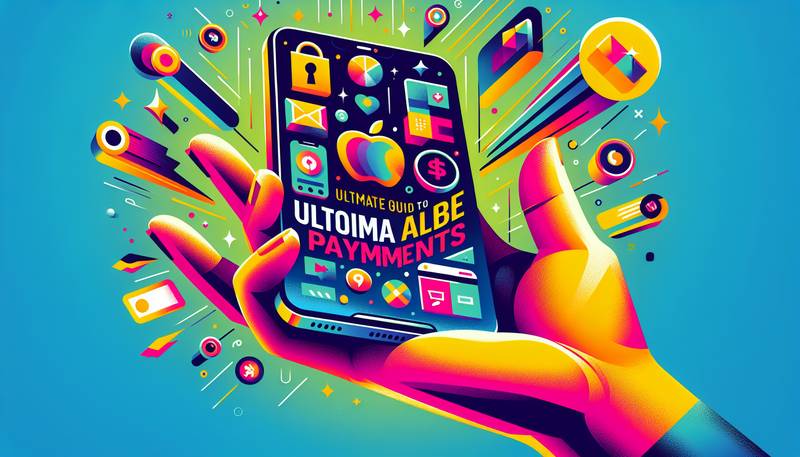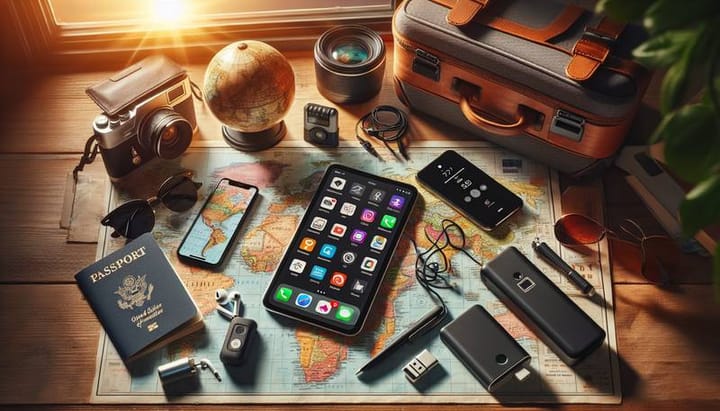Ultimate Guide to Mobile Payments: Apple Pay, Google Wallet, and More

Welcome to the revolution of financial convenience where a smartphone in your hand is everything you need to make a purchase. Yes, we're talking about mobile payments - the futuristic way to shop, dine and travel without the hassle of carrying a physical wallet. In this in-depth guide, we'll give you the run-down on some of the most widely-used mobile payment methods: Apple Pay, Google Wallet, and several other significant players in the game. So, whether you're at a grocery store, in a cab, or buying your morning coffee, get ready to experience seamless transactions with just a tap of your phone. Goodbye crumpled cash and cluttered card slots; hello digital sophistication!
What are Mobile Payments and How Do They Work?
Mobile payments, in a nutshell, are payments made for goods or services via a mobile device, primarily a smartphone. Built on a foundation of technology called Near Field Communication (NFC), mobile payments allow you to 'tap and go' at retail points that support contactless payments. Secure element chips inside your phone store payment information which is transmitted via NFC to the merchant's reader to initiate and complete the transaction. Furthermore, for added safety, each transaction uses tokenization, meaning no actual card details are transmitted, but a unique, one-time code - so even if a hacker intercepts this code, it's completely useless to them. It's quick, it's sleek, and it's incredibly secure, bringing you the future of transactions today.
The Rise of Apple Pay
As we delve into the world of Apple Pay, prepare to be awed by the sheer ease it brings into the daily lives of iPhone users everywhere. Launched in 2014, Apple Pay swiftly grew into a widely accepted payment method across millions of stores worldwide. To set it up, you simply add your credit, debit, or prepaid cards to the Wallet app on your Apple device, verify with your bank, and voilà - you're ready to pay. With the added convenience of Apple Watch compatibility, you don't even need to take your phone out to make a payment. Security-wise, Apple places your privacy at the forefront, with fingerprint or Face ID authentication required for each transaction to ensure it's really you making the purchase, and not someone who's found or stolen your device. What's more, your card number is never stored on your device or shared with merchants, keeping your private information safe.
Google Wallet: The Android Alternative
Preferring an Android over an Apple doesn't mean you have to compromise on convenience. Enter Google Wallet, previously known as Google Pay, the answer to Apple Pay for Android users. Setting up Google Wallet follows a similar process to Apple Pay. Within the Google Wallet app, you add your cards and go through a simple verification process. From there, paying is simple: unlock your phone and tap it to the contactless payment terminal. Like Apple Pay, Google Wallet transactions are secured with NFC technology, and card information is not shared during the transaction process. What sets Google Wallet apart is its deep integration with other Google services. If you receive money through Gmail or need to split a bill with friends via Google Chat, Google Wallet makes these exchanges easy and straightforward. Additionally, it works with any NFC-capable Android device, making it a versatile option for many users.
Understanding these payment systems is just the beginning. By embracing this technology, you embark on a journey of unmatched convenience. Stay tuned as we delve into other payment options and learn how to safeguard your transactions in the remaining sections.
Other Mobile Payment Players
While Apple Pay and Google Wallet may have the spotlight, the stage of mobile payments is crowded with an array of performers, each with their own tricks up their sleeves. Samsung Pay, for instance, works similarly to other mobile payment systems, but with a twist. It not only uses NFC technology but also Magnetic Secure Transmission (MST), which allows you to make payments on regular credit card machines that are not NFC enabled. This significantly increases the locations where Samsung Pay is accepted, making it an incredibly versatile choice for Samsung device users. Then there's PayPal, a big name in online payments, which has joined the mobile payment arena with its mobile app. PayPal's mobile app links directly to your existing account, meaning you can pay using your balance, linked bank account, or cards. It's accepted by many online shops and apps, sometimes offering more seamless checkout experiences due to PayPal's widespread adoption. And let's not forget about the tap-to-pay feature from different banking apps that some financial institutions provide. These solutions are tailored directly by your bank and link directly to your account, offering another layer of trust and security while capitalizing on the digital payment trend.
Security and Privacy in Mobile Payments
With all this convenience at the tips of our fingers, it's only natural to wonder: are mobile payments safe? The good news is, these services put a significant emphasis on security and privacy. All top mobile payment apps use advanced encryption and tokenization to safeguard your payment information. Transactions are authenticated with biometrics, such as a fingerprint or face scan, or a secure PIN. But beyond what the companies do, users should also take proactive steps to secure their mobile devices and payment information. Always ensure your phone's operating system is updated to the latest version, as these updates often contain important security patches. Keep a strong, unique password for your mobile wallet apps and never share it. Moreover, if your phone is ever lost or stolen, you can use features like 'Find My iPhone' or Google's 'Find My Device’ to lock it remotely or erase your data to prevent unauthorized access.
Tips for a Smooth Mobile Payment Experience
To make the most out of mobile payments, start by deciding which mobile payment system best fits with your daily needs. Do you frequent places that accept Apple Pay, or are you better off with the versatility of Samsung Pay's MST technology? Once you've committed to a system, take the time to understand its nuances—like how to select your default card if you have multiple ones linked or how to review your transaction history.Secondly, it's crucial to stay informed about where mobile payments are accepted. Look for contactless payment symbols at checkout or ask the staff if they accept mobile payments. As more businesses catch on, this will become less of an issue, but it's always best to have an alternative payment method at hand, just in case.Lastly, treat your mobile payment app like your physical wallet. Be mindful of its existence in your digital space, regularly check your transaction records for any signs of unauthorized usage, and protect it with strong security measures. Your vigilance is your best defence against any potential mishaps.
Embracing mobile payments is like stepping into a new era of technology – an era that shouts innovation and convenience from every rooftop. The days of scrounging for loose change and worn-out cards are numbered as we transition into a society where transactions are invisible, instantaneous, and incredibly secure. This guide is your stepping stone into that brave new world, where your smartphone isn't just a device—it's the key to your financial agility. Happy tapping!


